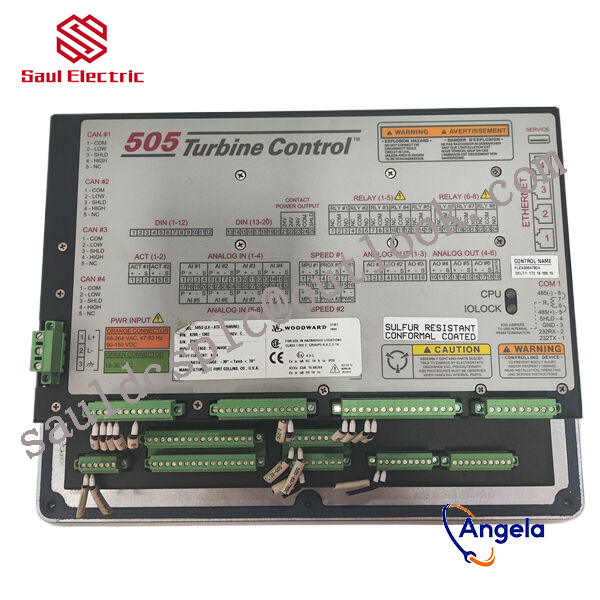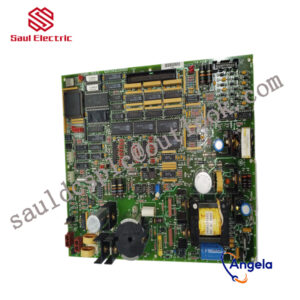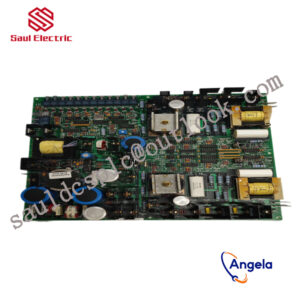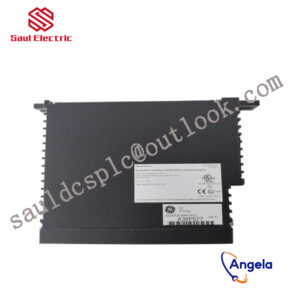Description
5464-538 WOODWARD generator set speed control board
Non differential regulation is mainly used for constant speed control and is suitable for single machine operation or multiple prime movers working together in an isolated power grid. Differential regulation provides more control flexibility.
further enhancing its performance and application range.
rich additional functions, and high-precision output signals. Whether it is in the fields of generator sets, compressors, pump stations, or ships and locomotives, it can effectively ensure the stable operation of equipment within the set range.
power measurement level 1, editable screen, multi interface toolkit connection, etc. All details can be found in Woodward easyYgen manual 37582A
The rated operating temperature range of this model is -20 to 70 ° C; the rated temperature range of the LT model is -40 to 70 ° C, suitable for outdoor use.
5464-538 is equipped with a monitor (not available on the 3100 model) and is designed for front panel installation.
The built-in HMI has a color LCD and soft keys (now with dedicated buttons) for direct control of the 5464-538 device. Multi level password protection can prevent unauthorized changes.
The generator set has four operating modes and the option to configure a manual circuit breaker control device.
How to use 5464-538?
What is 5464-538 used for?
5464-538 Customs Code
According to reports, ABB”s technical expertise and experience in many industries will be combined with Microsoft”s Azure intelligent cloud system and B2B engineering capabilities to create greater value for customers. Combined with ABB”s more than 70 million connected devices installed globally and more than 70,000 running control systems, ABB and Microsoft will join forces to create one of the world”s largest IIoT industrial cloud platforms.It is worth noting that IoT expert Guido Jouret (formerly general manager of Cisco’s IoT department) became the group’s chief digital officer on October 1, 2016. This marks that ABB is accelerating digital transformation and comprehensively building a new “Internet of Things+” ecosystem. ABB also hopes to obtain higher profits from this, and has proposed a financial target for 2015-2020 of pre-tax profit growth of 11%-16%.FANUCFANUC recently established the IoT platform Fanuc Intelligent Edge Link and Drive (FIELD), which uses NVIDIA artificial intelligence system. FIELD can realize the connection of machine tools, robots, peripheral equipment and sensors in the automation system and provide advanced data analysis to improve the production quality, efficiency, flexibility and equipment reliability in the production process – thereby improving the overall efficiency of the equipment ( OEE) and promote the improvement of production profits.The system can also improve robot productivity through artificial intelligence and bring autonomous learning capabilities to automated factory robots around the world. FANUC will use a series of GPUs and deep learning software designed and produced by NVIDIA to enable AI artificial intelligence to be used in clouds, data centers and embedded devices.When talking about the cooperation with FANUC, NVIDIA co-founder and CEO Jensen Huang said that the era of AI artificial intelligence has officially arrived. Through the deep learning function of GPU, it will stimulate a new wave of software learning and machine inference calculations. The most exciting of these is the ability of robots to understand their surroundings and interact with humans. NVIDIA is very happy to work with FANUC, the global leader in automated factories and robots, to build intelligent machines to benefit the future of mankind.It is reported that FIELD continues the success of the existing Fanuc ZDT (zero downtime function), which effectively combines Cisco cloud technology, IoT data collection software and point-to-point security. After connecting the robot through the use of an industrial Ethernet switch, it is then connected to Cisco”s UCS server – the system runs based on FANUC and Cisco”s ZDT data collection software. Automotive industry users can immediately realize reductions in downtime and cost savings after using the system.FIELD provides users and application developers with advanced machine learning and artificial intelligence capabilities and brings manufacturing to new heights of productivity and efficiency. Currently, FANUC has applied these new technologies to robotic bulk picking, production anomaly detection and fault prediction. Because FIELD combines artificial intelligence and cutting-edge computer technology, distributed learning is possible. The operating data of robots and equipment are processed in real time on the network, which also enables more intelligent coordination of production between various equipment, making complex production coordination that was previously difficult to achieve easily completed.In fact, many years ago, FANUC began to cooperate with Cisco to carry out the “non-stop” zero downTIme plan. In the plan, FANUC and Cisco will join forces to build an Internet of Things system that will allow FANUC to supervise every robot in the factory, predict abnormal conditions of the robots, and send more technicians to repair the robots before problems occur. So far, the program has tested 2,500 robots, including FANUC”s major customer GM General Motors. According to FANUC, the test program saved customers $38 million.YASKAWAAfter talking so much about the Internet of Things strategy of the industrial robot giant, let’s take a break here at Yaskawa and talk about the past.Midea and KUKA have officially received their marriage certificates, but you must know that as early as August 2015, Midea announced its robot strategy and established two joint venture subsidiaries with Japan”s Yaskawa Electric.The two subsidiaries are respectively for industrial robots and service robots, including Guangdong Yaskawa Midea Industrial Robot Co., Ltd. (Midea”s equity accounted for 49%) and Guangdong Midea Yaskawa Service Robot Co., Ltd. (Midea”s equity accounted for 60%).This shows that as early as 2015, Midea was actually “in love” with Yaskawa, but by 2016, she married Kuka.
5441-689 WOODWARD generator set speed control board
8444-1074 WOODWARD Speed Sensor Full Series
5462-524 WOODWARD 2301A Speed Control Controller
8440-2174 WOODWARD Speed Sensor Full Series
8440-1706 From Woodward, USA
5462-756 Controller debugger generator WOODWARD
5466-352 WOODWARD generator set speed control board
8280-415 WOODWARD 2301A Speed Control Controller
5462-519 Generator Parts Speed Controller 2301A Speed
9907-167 WOODWARD generator set speed control board
5464-218 From Woodward, USA
5417-027 WOODWARD Speed Sensor Full Series
5463-887 Generator Parts Speed Controller 2301A Speed
5434-334 Generator Parts Speed Controller 2301A Speed
5462-531 WOODWARD 2301A Speed Control Controller
5463-393 From Woodward, USA
5417-028 WOODWARD generator set speed control board
8580-086 WOODWARD 2301A Speed Control Controller
A8516-040 Generator Parts Speed Controller 2301A Speed
E8516-051 Generator Parts Speed Controller 2301A Speed
5415-966 WOODWARD 2301A Speed Control Controller
5500-562 WOODWARD Speed Sensor Full Series
5464-458 WOODWARD generator set speed control board
5466-425 Generator Parts Speed Controller 2301A Speed
8440-1019 WOODWARD Speed Sensor Full Series
8273-1011 Controller debugger generator WOODWARD
5464-021 WOODWARD generator set speed control board
9904-206 From Woodward, USA
8580-071 WOODWARD 2301A Speed Control Controller
9905-973 WOODWARD 2301A Speed Control Controller
5461-640 WOODWARD 2301A Speed Control Controller
8200-1301 WOODWARD 2301A Speed Control Controller





